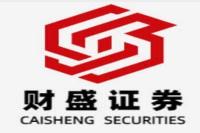Unlocking Growth: How China's New Market Access Policy Is Reshaping Industries
Meta Description: China's latest market access policy aims to unleash innovation by promoting new technologies and products. This article explores the key aspects of the policy, its impact on various industries, and the opportunities it presents for businesses.
Imagine a world where cutting-edge technologies and innovative products seamlessly integrate into the fabric of our lives. This isn't a futuristic fantasy; it's the reality that China's newest market access policy is striving to create. The policy, released by the Central Committee of the Communist Party of China and the State Council, is a bold initiative designed to unlock growth and reshape industries across the board. This move signals a powerful commitment to fostering a dynamic and competitive environment for businesses, and it's poised to have far-reaching implications for both domestic and international players.
In this in-depth analysis, we'll delve into the heart of this transformative policy, examining its core principles, exploring its impact on various sectors, and unveiling the opportunities it presents for businesses looking to capitalize on this exciting new landscape. You'll gain a deeper understanding of the policy's nuances, discover how it's shaping the future of China's economy, and learn how you can leverage its provisions to your advantage.
Shaping the Future: Key Pillars of the Policy
The new market access policy is built upon a foundation of four key pillars:
1. Strategic Focus on Emerging Industries: This policy is a clear signal of China's commitment to nurturing strategic industries like those in the fields of artificial intelligence, biotechnology, and clean energy. By creating a streamlined entry process for these industries, the policy aims to attract cutting-edge talent and technologies, fostering a vibrant ecosystem of innovation and growth.
2. Unleashing New Technologies and Products: The policy recognizes the transformative power of new technologies and products, emphasizing the need to accelerate their adoption and integration into the market. It underscores the importance of regulatory frameworks, technical standards, and certification processes that are both effective and efficient, facilitating the smooth entry and deployment of these advancements.
3. Pilot Programs for Accelerated Growth: The policy encourages the establishment of pilot programs in strategic locations, enabling the swift implementation of new market access initiatives. This "test and learn" approach allows for the rapid identification and scaling of successful policies, accelerating the development of new industries and technologies.
4. Data-Driven Decision-Making: Recognizing the importance of data in today's digital age, the policy emphasizes the creation of comprehensive data systems and analytical frameworks to support informed decision-making. This approach allows policymakers to monitor the effectiveness of different market access policies, facilitating course correction and optimization for maximum impact.
Transformation in Action: Impact Across Industries
The policy's impact is already being felt across a diverse range of industries, creating opportunities and challenges alike. Here's a glimpse of how the policy is reshaping the landscape:
1. Technology:
- AI and Robotics: The policy's emphasis on strategic industries makes it a game-changer for the AI and robotics sector. Expect to see increased investment in research and development, the emergence of new AI-powered solutions, and the rapid adoption of robotics in manufacturing and other industries.
- Biotechnology: The policy's focus on promoting innovation in the biotechnology sector is likely to fuel the development of new therapies, diagnostics, and personalized medicine solutions. This could lead to breakthroughs in healthcare, agriculture, and environmental protection.
- Renewable Energy: The policy's support for clean energy technologies is expected to accelerate the adoption of solar, wind, and other renewable energy sources, contributing to China's goal of achieving carbon neutrality.
2. Manufacturing:
- Smart Factories: The policy's emphasis on advanced technologies will drive the development of smart factories, characterized by automation, data analytics, and interconnected systems. This will enhance efficiency, productivity, and quality in manufacturing.
- Supply Chain Resilience: The policy's focus on fostering a dynamic and competitive market will encourage the development of more resilient supply chains, reducing reliance on single sources and mitigating risks associated with global disruptions.
3. Services:
- Digital Finance: The policy's support for the development of digital finance infrastructure will accelerate the adoption of fintech solutions, promoting financial inclusion and innovation in the financial services sector.
- E-commerce and Logistics: The policy's emphasis on streamlining market access will boost e-commerce growth and improve logistics efficiency, facilitating the seamless delivery of goods and services across China.
Seizing Opportunities: How Businesses Can Benefit
For businesses looking to thrive in this new environment, the key is to understand the policy's nuances and leverage its provisions to their advantage. Here are some strategies:
- Innovation is Key: Focus on developing innovative products, technologies, and services that meet the needs of the evolving market.
- Embrace Digitalization: Integrate digital technologies into your business operations to improve efficiency, enhance customer experiences, and access new markets.
- Partner Strategically: Collaborate with other businesses, research institutions, and government agencies to share resources, develop new solutions, and access new markets.
- Stay Updated: Continuously monitor the policy's implementation and adjust your business strategy accordingly to stay ahead of the curve.
Common Questions and Answers
1. What is the ultimate goal of this new policy?
The policy's ultimate goal is to promote innovation, drive economic growth, and improve the quality of life for Chinese citizens. By providing a more conducive environment for businesses, particularly those in strategic industries, the policy aims to attract investment, foster innovation, and create new jobs.
2. How does this policy differ from previous market access policies?
This policy is more focused on strategic industries and promoting innovation. It also emphasizes the importance of data, digitalization, and pilot programs for accelerated growth, reflecting the current economic landscape and technological advancements.
3. What are the potential challenges in implementing this policy?
Challenges include ensuring a level playing field for domestic and foreign businesses, balancing innovation with regulatory oversight, and managing the transition to a more data-driven economy.
4. What are the long-term implications of this policy?
The policy is expected to have a significant impact on China's future economic trajectory, leading to increased competitiveness, innovation, and economic growth. It will also contribute to the development of a more open and dynamic market economy, attracting investment and talent from around the world.
5. How can foreign businesses benefit from this policy?
Foreign businesses can benefit by gaining access to China's vast market, leveraging partnerships with Chinese companies, and participating in the development of new technologies and products.
6. Is this policy a sign of China's shift towards a more open and market-oriented economy?
The policy is a significant step in China's ongoing efforts to foster a more open and market-oriented economy. It reflects the government's commitment to promoting innovation, attracting investment, and creating a more dynamic and competitive economic landscape.
Conclusion
China's new market access policy is a powerful force for change, poised to reshape industries and unleash innovation across the country. It's a call to action for businesses to embrace the opportunities it presents, fostering a future where cutting-edge technologies and innovative products transform lives and drive economic growth. By understanding the policy's key pillars, its impact on various sectors, and the strategies for success, businesses can position themselves to thrive in this dynamic new environment. The future of China's economy is bright, and the stage is set for businesses to play a pivotal role in shaping its destiny.



